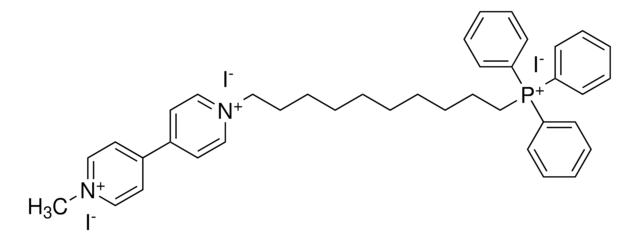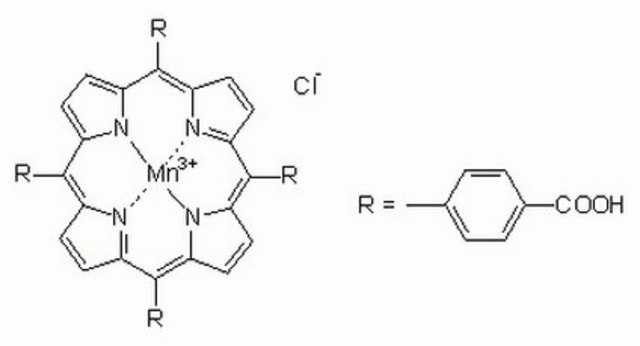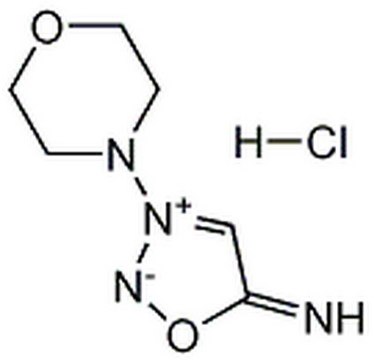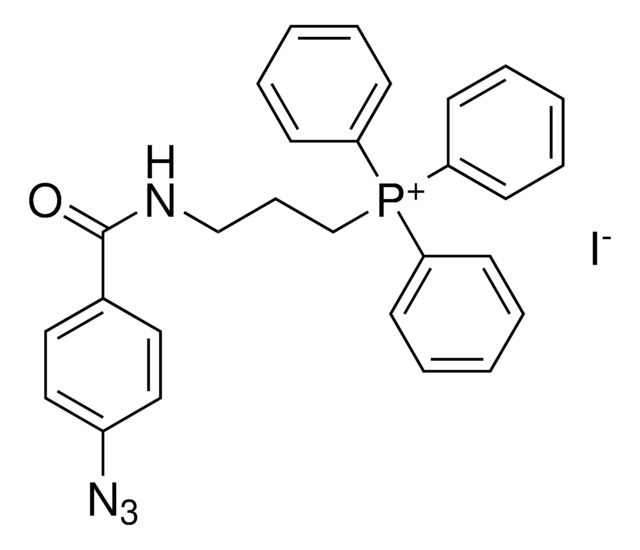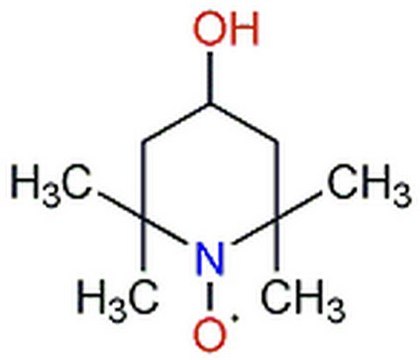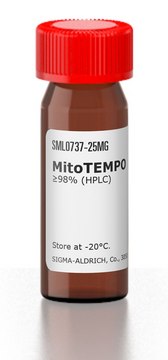SML0676
PY1
≥98% (HPLC)
Synonym(s):
3′-(Diethylamino)-6′-(4,4,5,5-tetramethyl-1,3,2-dioxaborolan-2-yl)-spiro[isobenzofuran-1(3H),9′-[9H]xanthen]-3-one
Sign Into View Organizational & Contract Pricing
All Photos(1)
About This Item
Empirical Formula (Hill Notation):
C30H32BNO5
CAS Number:
Molecular Weight:
497.39
UNSPSC Code:
12352200
NACRES:
NA.77
Recommended Products
Quality Level
Assay
≥98% (HPLC)
form
powder
color
, white to dark yellow-brown
solubility
DMSO: 1 mg/mL, clear (warmed)
storage temp.
2-8°C
Biochem/physiol Actions
DPP-Py1 is a ratiometric sensor. It is accurate and reactive with a relatively lower detection limit (1.8 × 10-7 M) than DPP-Py2. It is also stable in various pH buffers than DPP-Py2.
PY1 is a cell-permeable fluorescent H2O2 sensor.
PY1 is a cell-permeable fluorescent sensor that is highly selective for detecting the presence of H2O2 in living cells.
Legal Information
This product may be used for research purposes only. It is not licensed for resale and may only be used by the buyer. This product may not be used and is not licensed for clinical assays, where the results of such assays are provided as a diagnostic service. If a diagnostic or therapeutic use is anticipated, then a license must be requested from the University of California. The availability of such diagnostic and therapeutic use license(s) cannot be guaranteed from the University of California.
Storage Class Code
11 - Combustible Solids
WGK
WGK 3
Flash Point(F)
Not applicable
Flash Point(C)
Not applicable
Regulatory Information
新产品
Choose from one of the most recent versions:
Certificates of Analysis (COA)
Lot/Batch Number
Don't see the Right Version?
If you require a particular version, you can look up a specific certificate by the Lot or Batch number.
Already Own This Product?
Find documentation for the products that you have recently purchased in the Document Library.
Diketopyrrolopyrrole-based ratiometric/turn-on fluorescent chemosensors for citrate detection in the near-infrared region by an aggregation-induced emission mechanism.
Hang Y, et al.
Analytical Chemistry, 88(3), 1696-1703 (2016)
Our team of scientists has experience in all areas of research including Life Science, Material Science, Chemical Synthesis, Chromatography, Analytical and many others.
Contact Technical Service

![[Des-Tyr22]-Calcitonin salmon](/deepweb/assets/sigmaaldrich/product/images/282/634/15345f68-95be-4b5f-abc2-cb170099f26f/640/15345f68-95be-4b5f-abc2-cb170099f26f.jpg)
